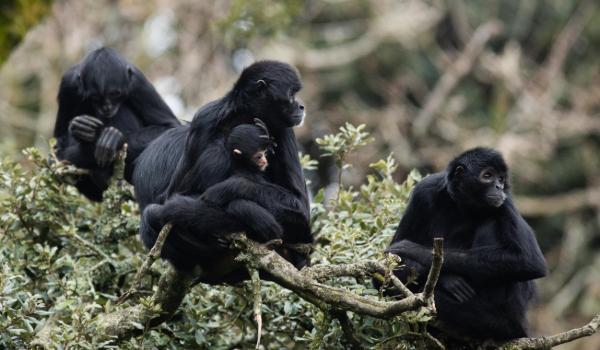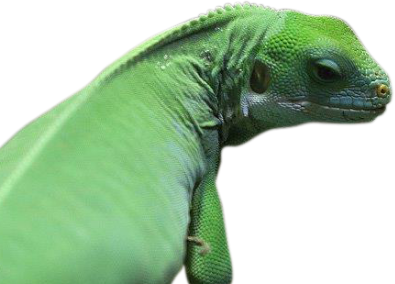Colombian Black Spider Monkey
KEY FACTS
-
LATIN NAMEAteles fusciceps rufiventris
-
BIOMETropical Forests
-
CLASSMammal
-
ORDERPrimates
-
CONSERVATION STATUSCritically Endangered
COME AND FIND ME AT..
The Lake

About the Black Spider Monkey
The Colombian spider monkey is one of the largest of the New World monkeys and originates from the humid forests of Colombia and Panama. This primate has long limbs, thumb-less hands and a prehensile tail which it uses for grasping, holding or suspending itself from trees in its chosen habitat. Studies have highlighted the important ecological role undertaken by these primates in South America. As Spider monkeys feed on fruits, travelling through the forest allows for the dispersal of undigested seeds through their manure which gives rise to the growth of new plants.
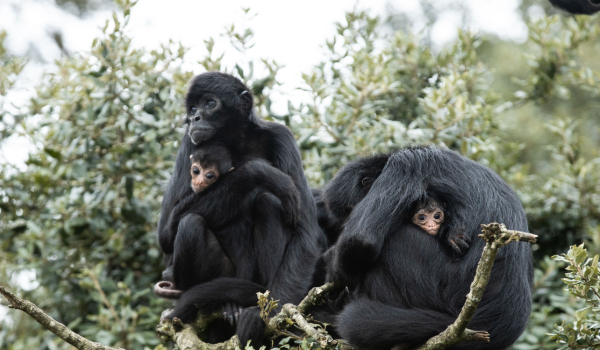
Habitat
The Black Spider Monkey is the largest of the New World monkeys and is found in humid forests up to 2,500 metres above sea level in Colombia and Panama. It’s also an arboreal species, spending the vast majority of its time high up in the tree canopy. Its tail functions almost as a dexterous fifth limb as it moves though the canopy. Their incredible tail and long limbs give them a spider- like appearance as they move from branch to branch.
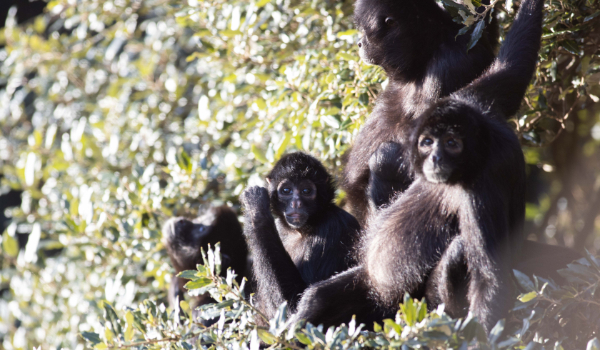
Wild Notes
Found in social groups of up to 30 individuals, Spider monkeys break up into smaller foraging groups of between three and four to feed, usually led by a female. Its diet is mainly made up of fruit, though it also consumes leaves for protein and has a pot-bellied appearance because of its large stomach. Its brain is up to twice the size of a Howler Monkey’s (in equivalent body size) and this is thought to be because of the monkey’s more complex social system and frugivorous diet.
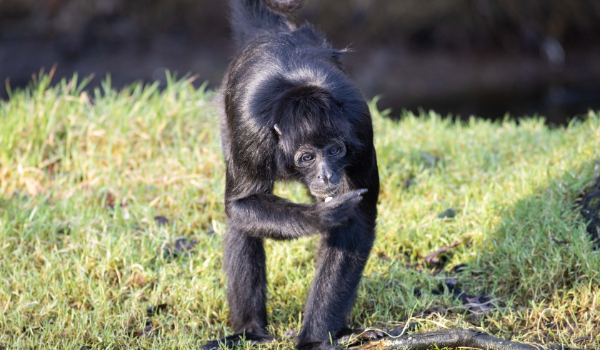
Conservation
Colombian Black Spider Monkeys are listed as Critically Endangered for several reasons. This primate species is hunted as a source of food throughout its home-range. Furthermore, logging and habitat destruction are reducing the availability of suitable habitat. Late maturation and long birth intervals limit its ability for numbers to recover in the wild.
Did You Know?
There are seven species of spider monkeys included in the genus Ateles, all living in tropical rain forests of Central and South America.
The Fota Connection.
A firm favourite of visitors both young and old due to the energetic acrobatic antics of the monkeys on their tree-filled island. This species has been resident in the park for many years with the current troop comprised of 2 adult males, 4 adult females and 2 juveniles (1 male, 2 female) who were born in 2019.
